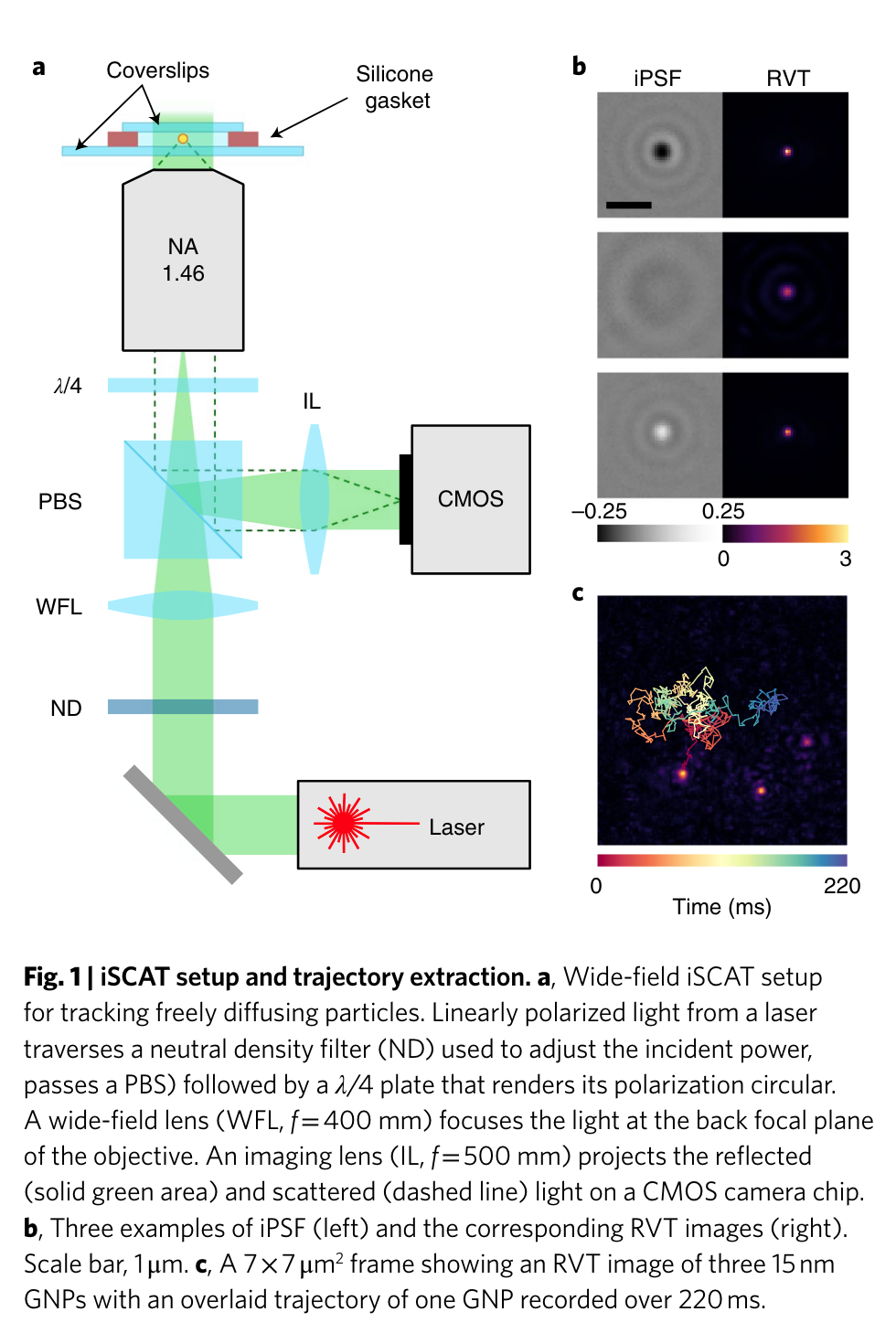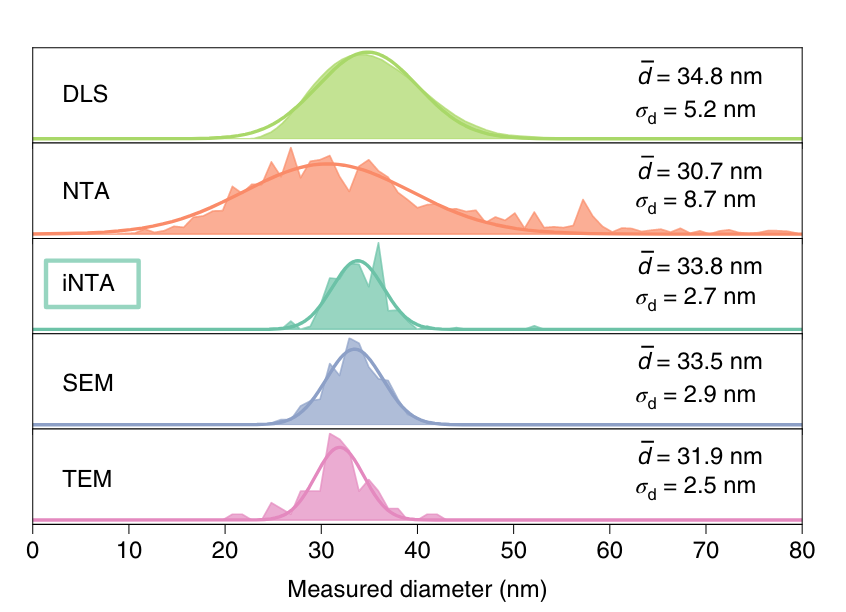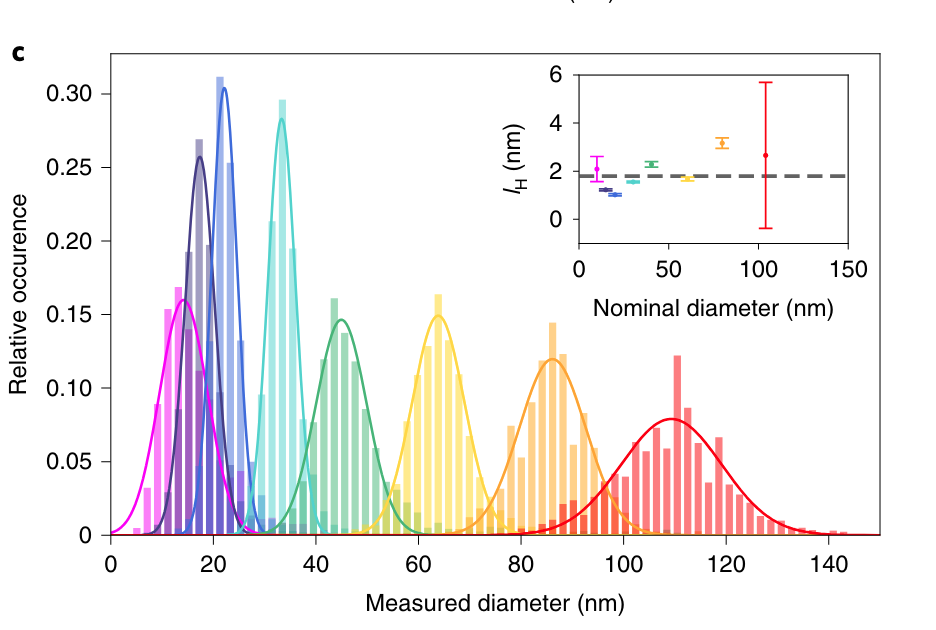Literature/202212091127 iscat for refractive index of evs
- Source: [@kashkanova2022Precision size and refractive index analysis of weakly scattering nanoparticles in polydispersions]
- Tags: #iSCAT #Refractive-Index #EV #microscopy
To overcome some of the limitations of nanoparticle tracking analysis, this paper leverages the use of iSCAT to measure the refractive index of particles, and to measure the size of smaller objects. The biggest advantage of using iSCAT over light sheet for a nanoparticle tracking analysis measurement is the superior signal to noise ratio for smaller particles. Interferometric measurements scale like
Moreover, a smaller response to diameter allows to extend the dynamic range of the instrument. The setup is the traditional iScat setup using a

Note
The objective is placed
Comparison with other methods
 The image above is the result of measuring size of 30nm gold particles with 4 commercially available instruments (DLS, TEM, SEM, and NTA) plus the custom iNTA setup. It is surprising that iNTA has a resolution similar to that of TEM, considering they are only exploiting the diffusion coefficient measurement to calculate diameter.
The image above is the result of measuring size of 30nm gold particles with 4 commercially available instruments (DLS, TEM, SEM, and NTA) plus the custom iNTA setup. It is surprising that iNTA has a resolution similar to that of TEM, considering they are only exploiting the diffusion coefficient measurement to calculate diameter.
In the text, the authors claim that they use traces with at least 25 localization points and use a track-length weighted distribution. Sadly they don't fully comment on how they manage to to get a 
